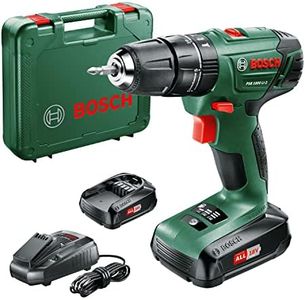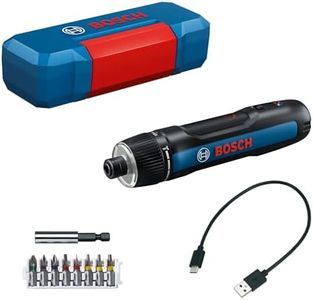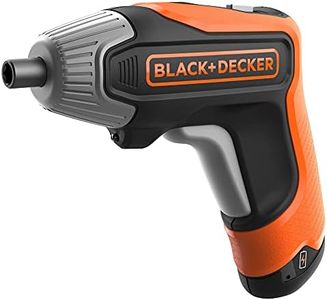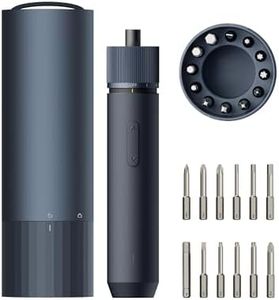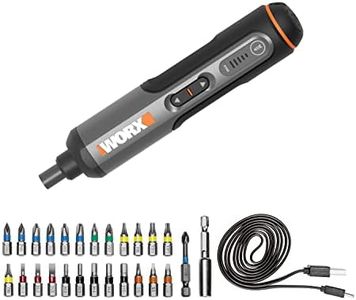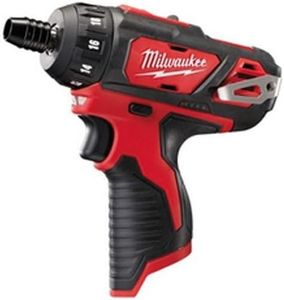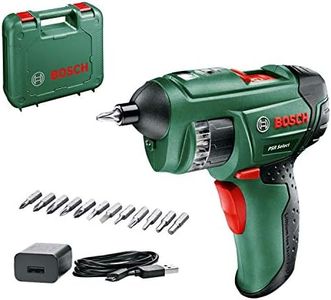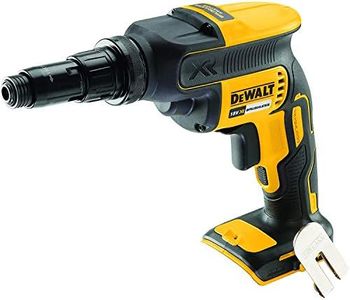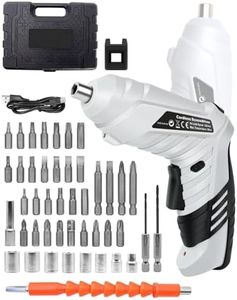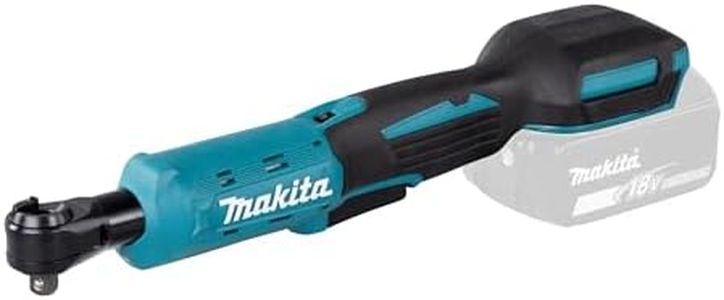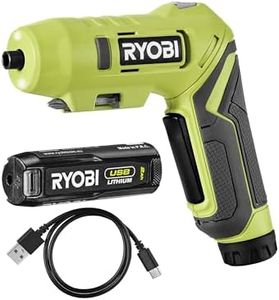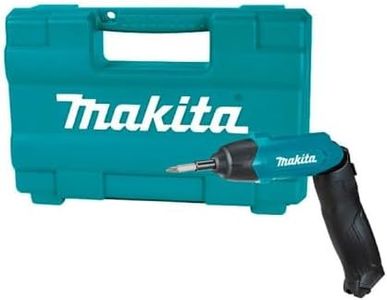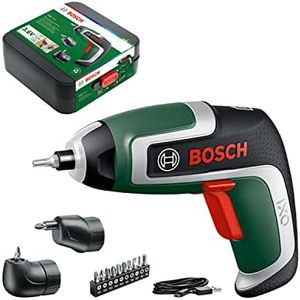We Use CookiesWe use cookies to enhance the security, performance,
functionality and for analytical and promotional activities. By continuing to browse this site you
are agreeing to our privacy policy
10 Best Electric Screwdrivers
From leading brands and best sellers available on the web.Buying Guide for the Best Electric Screwdrivers
Choosing the right electric screwdriver can make your DIY projects and professional tasks much easier and more efficient. The key is to understand the various specifications and how they align with your specific needs. By focusing on the right features, you can ensure that you get a tool that is both effective and reliable for your intended use.TorqueTorque is the force that the screwdriver applies to turn screws. It is important because higher torque means the screwdriver can handle tougher materials and larger screws. Torque is usually measured in Newton-meters (Nm). For light tasks like assembling furniture, a lower torque (around 3-5 Nm) is sufficient. For more demanding tasks like drilling into wood or metal, you might need a higher torque (10-20 Nm or more). Consider the types of projects you will be working on to determine the appropriate torque level.
SpeedSpeed, measured in rotations per minute (RPM), indicates how fast the screwdriver can turn. This is important because higher speeds can make quick work of driving screws, but lower speeds offer more control for delicate tasks. Electric screwdrivers typically range from 200 to 600 RPM. For general household tasks, a speed of around 200-300 RPM is usually adequate. For more intensive tasks, such as construction or heavy-duty repairs, a higher speed may be beneficial. Think about whether you need precision or speed for your projects.
Battery LifeBattery life determines how long you can use the screwdriver before needing to recharge it. This is crucial for uninterrupted work, especially on larger projects. Battery life is often measured in milliampere-hours (mAh) or by the voltage of the battery. A higher mAh or voltage generally means longer battery life. For occasional use, a lower capacity battery (around 1,000-1,500 mAh) may be sufficient. For frequent or prolonged use, look for a higher capacity battery (2,000 mAh or more). Consider how often and how long you will be using the screwdriver to choose the right battery life.
WeightThe weight of the electric screwdriver affects how comfortable it is to use, especially for extended periods. A lighter screwdriver (under 1 kg) is easier to handle and reduces fatigue, making it ideal for smaller, repetitive tasks. Heavier models (over 1 kg) might offer more power and durability, which can be beneficial for tougher jobs. Think about the duration and type of tasks you will be performing to decide on the appropriate weight.
ErgonomicsErgonomics refers to how comfortable and easy the screwdriver is to hold and use. This is important to prevent strain and ensure precision. Look for features like a comfortable grip, balanced weight distribution, and easy-to-reach controls. If you have smaller hands or will be using the tool for long periods, ergonomics become even more critical. Test the screwdriver if possible to see how it feels in your hand and ensure it suits your comfort needs.
Chuck SizeThe chuck size determines the maximum diameter of the bit that the screwdriver can hold. This is important because it affects the versatility of the tool. Common chuck sizes are 1/4 inch and 3/8 inch. A 1/4 inch chuck is suitable for lighter tasks and smaller screws, while a 3/8 inch chuck can handle larger bits and more demanding tasks. Consider the types of screws and bits you will be using to choose the appropriate chuck size.
Additional FeaturesAdditional features like LED lights, adjustable speed settings, and quick-change chucks can enhance the usability of the electric screwdriver. LED lights are useful for working in low-light conditions, adjustable speed settings provide more control, and quick-change chucks make it easier to switch between different bits. Think about the specific challenges you might face in your projects and choose features that will help you overcome them.
